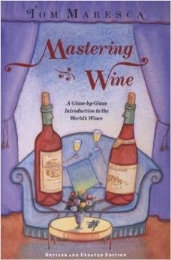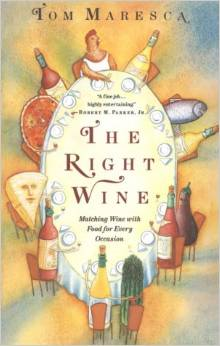An Adriatic cruise beleaguered by rain, however disappointing in many respects, is certainly fine for exploring your vessel’s wines and bars. Diane and I undertook a lot of such investigations during our soggy week aboard the MSY Wind Surf.
.
.
The ship’s basic wine list leaned heavily on young wines, many of them from California or the Pacific Northwest (the company, Windstar, is American-owned). We nevertheless managed to find a few bottles pleasing to our more Europe-oriented palates – a good Fèvre Chablis, for instance, and a really elegant Batasiolo Barolo, as well as a nicely maturing Pouilly Fuissé – so there was no danger of our dying of dehydration.
Wind Surf’s dining rooms were staffed by several wine stewards: Eleonora, the ship’s young senior sommelier; Noel, who served us our first evening on board; and Jaerve, who poured for us our last and talked to us passionately about wine.
.
.
One particularly grey afternoon Eleonora organized a tasting of some of Wind Surf’s higher-shelf bottles, which my vinous curiosity prompted me to try, even though I have happily abandoned most large-scale tastings.
.
.
This tasting was a totally different creature. Professional tastings tend to be like marathons; this one was more like a stroll in the park. Professional tastings will confront you with anywhere from 10 to 30 wines, chosen to show an audience of journalists, importers, and buyers the spectrum of a producer, a region, a variety, or a consortium; and meant to be sampled and spat more or less in silence.
Eleonora’s tasting was quite appropriately aimed for those of the ship’s clientele who were interested in wine but not necessarily very knowledgeable about it, and it consisted of only five wines chosen from among the most exotic or most interesting or most expensive of Wind Surf’s stock.
.
.
This audience was exactly the kind of consumer we journalists, back in the day, used to call civilians, and who – we constantly had to remind ourselves – were the people we were writing for, not for each other, as was an ever-present temptation. (I have long believed that the reason so much wine writing becomes so recherché is because writers keep trying to impress each other rather than enlighten a consumer.)
Another major difference between this tasting and the ones I had grown accustomed to: no spitting. You were encouraged not just to taste the wines but to drink them: instead of an austere plate of dry crackers or bread slices, an attractive little tray of snacks accompanied each set of glasses. Very appropriate to the audience and the occasion, I thought, although a bit of a shock to me: What’s sauce for many geese isn’t sauce for every gander.
.
.
The five wines formed a nicely mixed group, well chosen for showing the range available on shipboard: two whites and three reds, Pouilly Fumé and Vouvray, a Supertuscan, a Châteauneuf du Pape, and a Spanish Supertuscan type.
.
The Pouilly Fumé, a 2021 Les Deux Cailloux by Fournier Père et Fils, opened the tasting. It smelled quite classically of grass and smoke, with a distinct sub-aroma of wet leaves. Those elements were not as emphatic in the mouth: The wine was smoother and rounder than its nose. A little taste of dried apple came up as it opened in the glass. I found this a pleasant enough wine, even though Sauvignon blanc is probably my least favorite of the French noble varieties.
.
.
The Vouvray, a 2021 by Alban de Saint-Pré, had a fine earthy, chalky nose and showed good body and balance. It tasted a little sweet in the finish – a bit of dried apricot – but, just opened, it was clean and refreshing. Unfortunately, from my point of view, the longer it sat in the glass the sweeter it got, but it was one of the favorite wines for many other tasters. In the Loire, Chenin Blanc yields everything from superb dry dinner wines (such as Savennières) to incredibly age-worthy sweet dessert wines, so this was a fair representative of the breed and a good introduction to it for this audience.
.
.
Then Eleonora moved to red wines, starting with 2016 Lucente, a Supertuscan created on one of Frescobaldi’s Montalcino estates, in what was originally a joint project with Robert Mondavi. This was a wine of deep color and deep aroma, the latter still very grapey – lots of Sangiovese – because of the wine’s youth. The Sangiovese was also evident on the palate, along with other grape flavors (turned out to be Merlot) and plenty of tannin to restrain Sangiovese’s abundant acidity. This was a winemaker’s wine, not a grape farmer’s, and still very young. The blend, by the way, was 60% Merlot and 40% Sangiovese, but the Sangiovese made a fight of it.
.
Then came a 2019 Châteauneuf du Pape from Maison Castel. That is about ten years younger than I like to drink Châteauneuf, but this was a good specimen, more forward and ready than I’d expected. It showed a great earthy, underbrushy nose, and on the palate dark cherry/berry fruit. It finished dark as well, with earthy, black fruit flavors persisting nicely Despite being so young that it was almost purple, it drank quite pleasantly.
.
.
The final wine was the oldest of the group, a 2012 Campo Eliseo Toro: Toro is the denomination, Campo Eliseo the estate. This was, in effect, a Spanish version of a Supertuscan wine: 100% Tinto de Toro, a variety of Tempranillo (a grape that is in Spain traditionally blended with others in wines like Rioja), and evidently aged long in abundant new oak. The palate was dominated by dark, dried cherry flavors and by forceful acidity and tannins. It’s a wine that needs beef and old cheeses. I thought it should have been showing better for its ten years of aging, but then I am not enamored of what all that wood does to and for a wine.
.
.
This tasting was a very interesting experience for me. I was particularly curious to hear people’s reactions to the individual wines and to hear the questions they asked – some very shrewd, some quite naïve. As a wine journalist, I know how easy it is to get caught up with the shrewd questions and to forget that the naïve ones are just as worthy, and certainly more needing, of attention. Eleonora did a nice job of attending to both, with respect and enthusiasm. This was for Diane and me a very pleasant way to spend a rainy afternoon at sea.



















